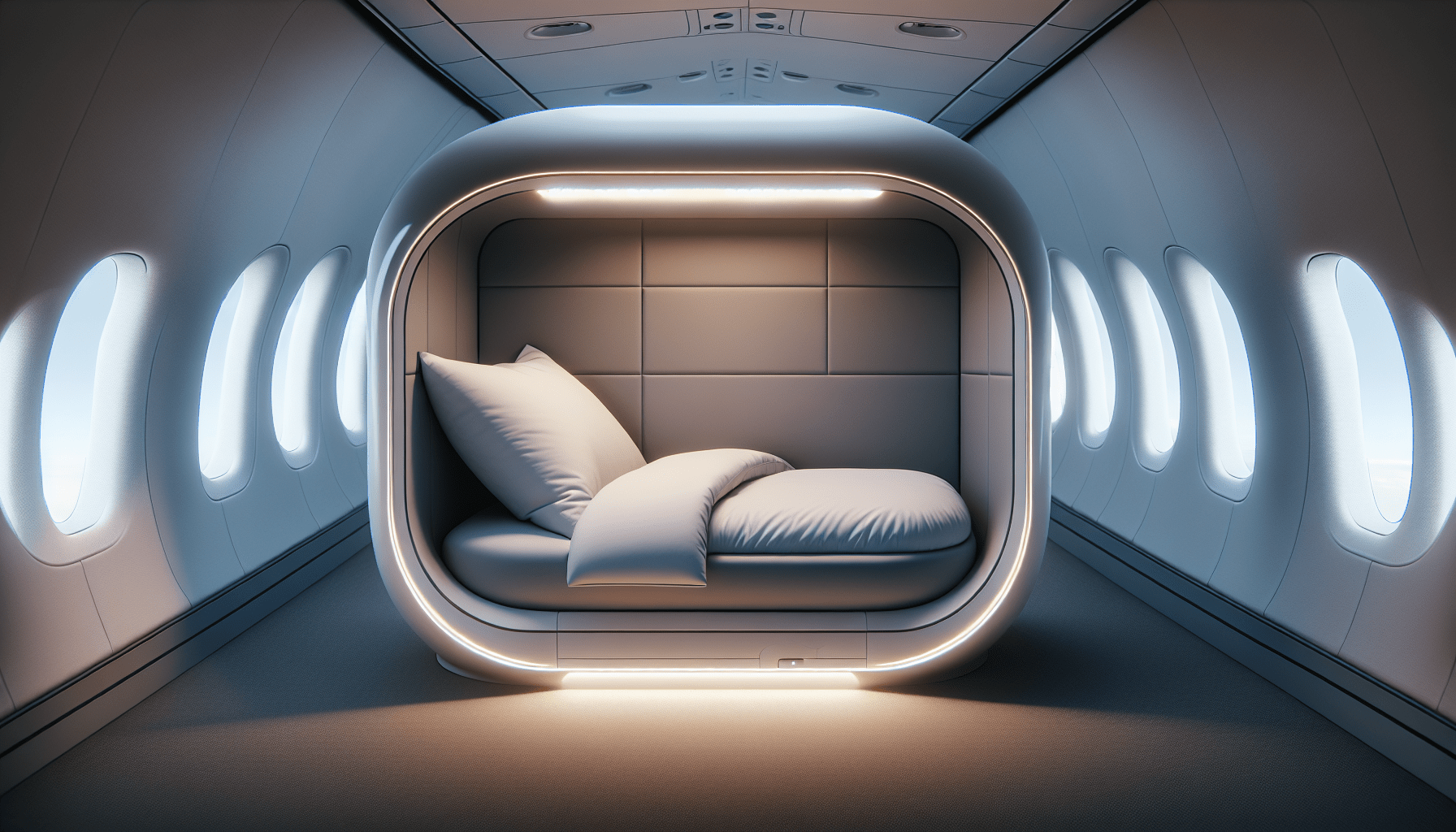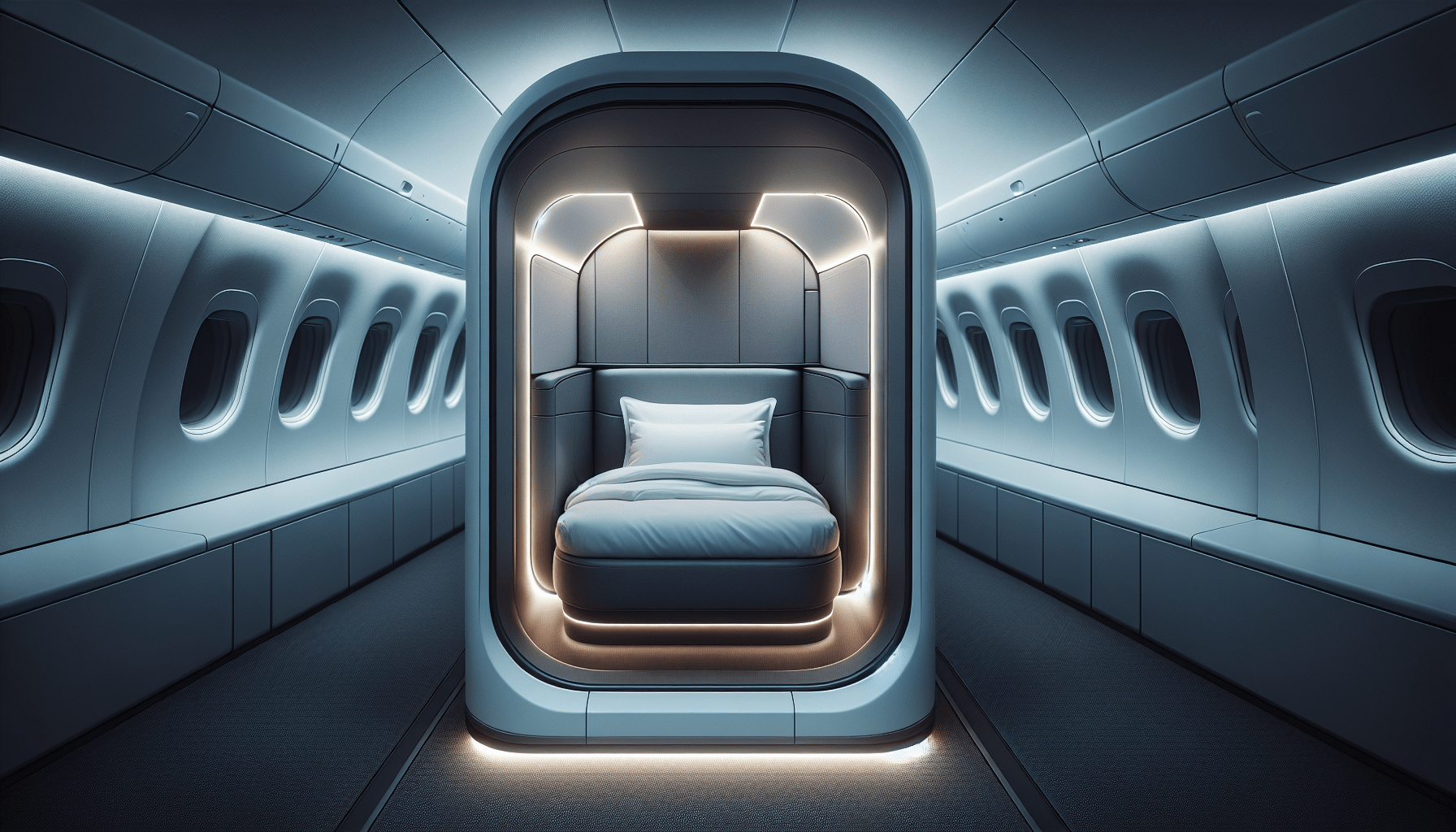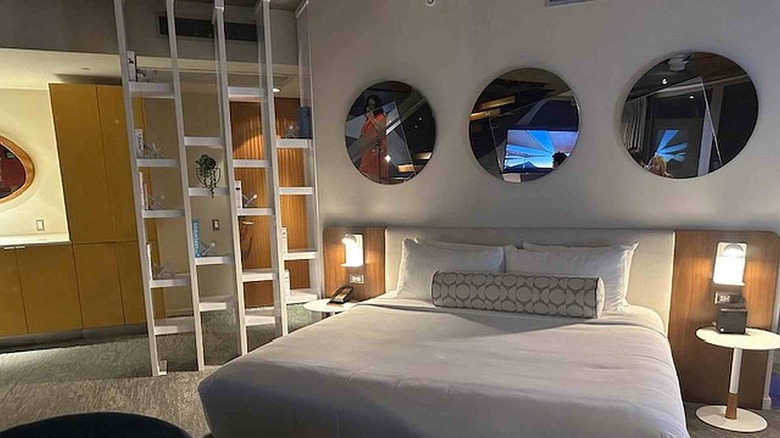SIEPASA Windproof Travel Compact Umbrella-Automatic Umbrellas for Rain-Compact Folding Umbrella, Travel Umbrella Compact, Small Portable Windproof Umbrellas for Men Women Teenage.
$8.49 (as of November 23, 2024 15:27 GMT +00:00 - More infoProduct prices and availability are accurate as of the date/time indicated and are subject to change. Any price and availability information displayed on [relevant Amazon Site(s), as applicable] at the time of purchase will apply to the purchase of this product.)Have you ever wondered where pilots sleep during long-haul flights? It’s easy to forget that the folks in the cockpit need shut-eye too. Unlike the often cramped and uncomfortable spaces passengers are stuck with, pilots have their own stash of comfort high above the clouds. In this piece, we’ll uncover the hidden world of pilot sleeping compartments, designed to provide much-needed rest during those grueling transcontinental journeys.

Shop These Accessories for a Comfortable Trip
What is a Crew Rest Compartment?
Pilot sleeping quarters are more luxurious than you might imagine. Envision a mini capsule hotel room, tucked away above the main cabin. According to Captain Richard Levy, a retired pilot with 41 years of experience, most long-haul aircraft are outfitted with these hidden gems. These spaces act as a refuge, providing pilots with the necessary environment to recharge.
Layout and Features
The basic setup includes at least two beds and, if space permits, a chair for lounging. It might sound modest, but these compartments are specifically designed to block out disruptive noises and odors, maintaining a serene and restful atmosphere. Adjustable lighting and climate control ensure that the temperature and brightness are just right for optimal resting conditions.
Regulatory Requirements
These rest areas have stringent regulations regarding their design and functionality. The reasoning here is straightforward: if pilots aren’t well-rested, the safety of the flight could be jeopardized. As per the guidelines, these compartments must isolate the pilots from any disturbances that could hinder their sleep quality.
How Long Are Pilots Allowed to Sleep?
You might be picturing the pilots clocking in a solid eight hours while the autopilot takes care of the rest, but the reality is different. In fact, pilots operate under strict rules concerning their in-flight rest periods.
Shorter Rest Breaks
“On a long-haul flight, the rest breaks are usually divided among the crew,” Captain Levy explains. On a 17-hour flight, this would break down to roughly four-hour sleep intervals for each pilot. This ensures they get sufficient rest without leaving the cockpit unmanned for too long. Some airlines opt to split the cockpit crew into two shifts: one managing the first half of the journey, and the other taking over for the latter half, providing each group with a more extended period to rest.
Ground Rest Opportunities
Besides the in-flight rest, pilots are allocated substantial layover periods between flights. This gives them ample time to recuperate and be in their best condition for the next leg of their journey. So, if you ever worried about the pilot’s sleep quality affecting your flight safety, rest assured—they get their beauty sleep both in the air and on the ground.

Shop These Accessories for a Comfortable Trip
Who Monitors the Cockpit?
No matter how long your flight is, there’s always someone monitoring the plane at all times. The cockpit is never left unattended. On flights lasting less than eight hours, typically only two pilots—usually a captain and a first officer—are required. In these cases, rest breaks aren’t part of the official schedule.
Longer Flights and More Pilots
For flights exceeding eight hours, the rule changes. These extended flights generally require three to four pilots on duty. This allows for a rotating system of rest breaks, ensuring there are always enough pilots to manage the cockpit while others are recharging.
Safety Protocol During Critical Times
During critical times like takeoff and landing, the entire crew must be present in the cockpit. Weather changes, sudden turbulence, or any other unexpected circumstances make these moments especially crucial. Captain Levy recalls having to divert a flight due to a typhoon while en route to Hong Kong, needing him to be alert and available during the final hours of that flight. In such situations, pilots rearrange their rest periods to ensure they’re awake and alert during these critical phases.
The Importance of Pilots’ Rest
If the comfort and safety of passengers depend on well-rested pilots, then it is clear why these rest compartments are so essential. Fatigue can impair decision-making and reaction times, which are critical in flight operation.
Fatigue Management
Managing pilot fatigue doesn’t just rely on in-flight rest. Comprehensive fatigue management programs are part of airline protocol, including education on sleep hygiene, regular medical checks, and training on recognizing signs of fatigue.
In-Flight Crew Coordination
In-flight responsibilities are meticulously planned and coordinated amongst the crew to ensure everyone gets the required rest. This way, the flight progresses smoothly without compromising operational safety. This coordinated effort means everyone, passengers and crew alike, has a safer and more pleasant journey.
Inside the Crew Rest Compartment
In case you’re curious about what it’s really like inside these hidden compartments, let’s take a closer look.
Privacy and Comfort
The compact yet functional design prioritizes privacy and comfort. Pillows, blankets, and sometimes even small personal entertainment systems are provided. While it might not compare to your king-sized bed at home, it’s a significant upgrade from the economy class constraints many of us deal with.
Accessible Yet Discreet
These compartments are located in discreet parts of the plane. They’re no easy find for passengers, often accessed through unmarked doors or ladders, ensuring that the pilots can rest undisturbed.
Regulations and Compliance
Regulatory bodies, such as the Federal Aviation Administration (FAA) and the International Civil Aviation Organization (ICAO), closely monitor and control the rules surrounding pilot rest areas and schedules.
Legal Requirements
The FAA dictates specific guidelines on how much rest a pilot must have before and after flights, ensuring that fatigue does not cloud their judgment. These requirements are enforced globally, with each country’s aviation authority upholding similar standards.
Airline Policies
Airlines have internal policies that often exceed these regulatory standards. They go above and beyond to ensure their pilots remain in optimal condition, understanding that safety is the paramount priority in aviation.
Conclusion
So the next time you board a long-haul flight, you can have peace of mind knowing that your pilots have their own slice of comfort tucked away within the airplane. Understanding that they rest up in specialized compartments designed for their needs, complying with stringent regulations, and supported by extensive ground and in-air rest periods, you can appreciate the unseen but vital aspects that contribute to a safe and pleasant journey.
From the hidden compartments to the meticulous scheduling and safety protocols, it’s clear that airline companies prioritize both passenger comfort and pilot wellbeing. May your newly gained knowledge about the inner workings of long-haul flights make your travels a bit more intriguing, as you think of the pilots catching their well-deserved Zs somewhere high above.
Remember, the road to understanding the complexities of aviation doesn’t end here. Stay curious and keep seeking out new horizons. After all, it’s pretty fascinating what’s going on behind the scenes while you’re watching the latest in-flight movie at 30,000 feet.
Shop These Accessories for a Comfortable Trip






